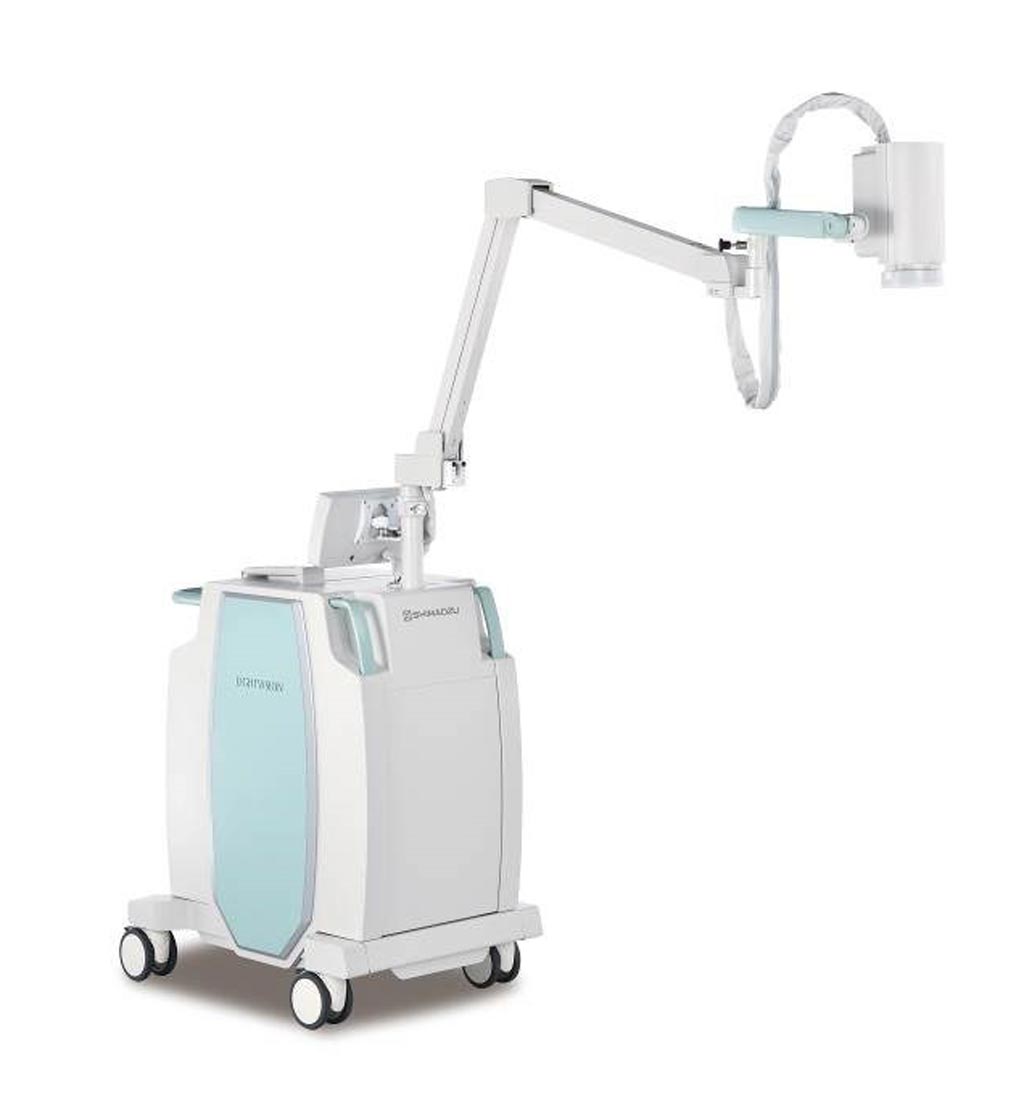NIR Imaging System Visualizes Lymph and Blood Vessels
By MedImaging International staff writers
Posted on 02 May 2018
A new indocyanine green (ICG) fluorescence imaging system supports breast cancer (BC) treatment by identifying lymph and blood vessels.Posted on 02 May 2018
The Shimadzu (Kyoto, Japan) LightVision near-infrared (NIR) imaging system can create real time contrast images of lymph vessels below tissue surfaces by administering ICG through lymph vessels or veins, exposing it to an excitation light, and then detecting and visualizing the slight emission of NIR light from the ICG with an integrated X10 zoom camera. The camera mount arm can be extended to a length of 180 cm for optimal positioning during procedures, while the main unit is easily controlled via a simple and detachable control console.

Image: The LightVision NIR fluorescence imaging system (Photo courtesy of Shimadzu).
Features of the system include built-in high-definition sensors to produce high quality, real-time images on a single monitor; automatic focusing, light exposure adjustment, and white balance (WB) adjustment; and image acquisition in a bright field of view, without needing to turn off room lighting in the operating room. The system also supports simultaneous display of three concurrent images, which means that a visible light image, a NIR fluorescence image, and a combined, superimposed image can all be displayed simultaneously, in real-time, on the same monitor screen. To identify the position of lymph nodes, lymph vessels, and blood vessels, the ICG areas of fluorescence can be displayed as either green or blue.
By visualizing lymph vessels during surgery, surgeons can perform procedures while monitoring and shielding the position of the lymph vessels being excised, especially useful for identifying the position of sentinel lymph nodes (SLNs), which are important for diagnosing the metastasis status of cancer cells during BC surgery. Monitoring blood flow intraoperatively is also useful, by helping to evaluate blood flow through flaps and anastomotic vessels during breast reconstructive surgery.
“Due to the increasing rate of breast cancer morbidity, Shimadzu has invested significant resources toward applying state-of-the-art science and technology supporting the diagnosis and treatment of breast cancer,” said the company in a press statement. “The new LightVision system has been developed as part of this ongoing initiative. Shimadzu's long-term goal is to provide comprehensive support for early diagnosis, examination, treatment and prognosis management of diseases.”
Finding metastatic cancer cells during BC surgery requires first identifying the position of SNLs, which have a diameter of just a few millimeters, and then excising these nodes to diagnose their pathology. If the cancer has not yet metastasized to an SLN, subsequent axillary lymph node excision can be omitted, thus preventing consequent lymphedema and maintaining the patient's quality of life after surgery. In recent years the interest in using fluorescence methods for SLN biopsies has been increasing.














